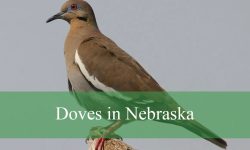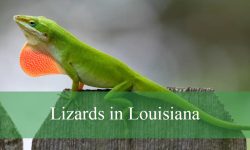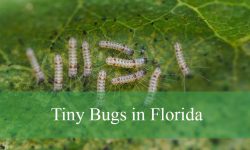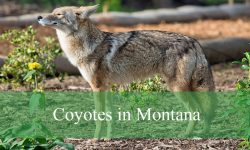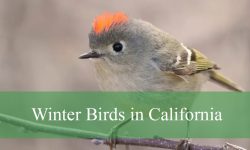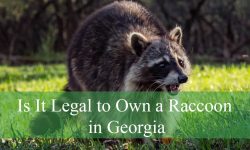Washington’s wild landscapes, from damp coastal forests to sunlit eastern plains, are home to an incredible variety of insects and spiders. Most of them are harmless and play important roles in pollination and pest control, but some can bite, sting, or spread diseases that make encounters unpleasant or even dangerous. For anyone who loves exploring nature, learning how to recognize these species helps ensure a safer outdoor experience.
Among the many insects that thrive in the state, a few stand out for their painful stings or venomous bites. Black Widows, hornets, and biting flies are found in several regions, especially during the warmer months when they are most active. They are fascinating creatures that deserve respect and distance rather than fear.
This guide introduces 22 dangerous bugs in Washington with details on their appearance, behavior, and typical habitats. Each description is designed to help you identify these insects easily and understand how to avoid harm while observing the diverse and sometimes hazardous world of Washington’s bugs.
Types of Dangerous Bugs Found in Washington
Western Black Widow Spider (Latrodectus hesperus)
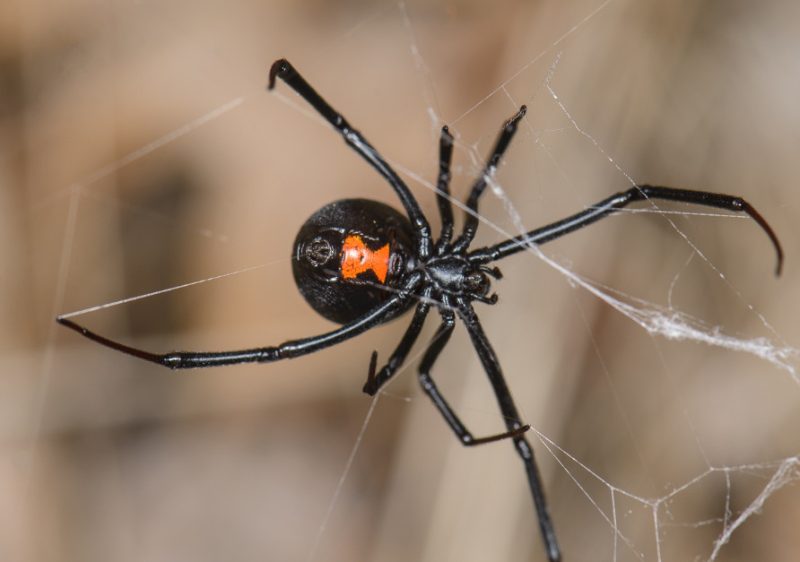
The Western Black Widow Spider is one of the most feared arachnids in Washington due to its potent venom. This shiny black spider has a round abdomen marked with a distinctive red or orange hourglass on the underside. Females measure about 1.5 inches when including leg span, while males are smaller and lighter in color.
Black Widows prefer dark, undisturbed areas such as woodpiles, sheds, garages, and under outdoor furniture. They spin irregular webs close to the ground and usually stay hidden during the day. At night, females often wait upside down in their webs for prey to pass.
The venom of the female Black Widow is neurotoxic, capable of causing severe muscle pain, nausea, and difficulty breathing in humans. Though rarely fatal, bites require medical attention, especially for children, the elderly, or those with allergies. Males are less dangerous and rarely bite.
In Washington, Western Black Widows are more common in the drier eastern regions and the central valleys, though they can occasionally appear in western areas during warmer months. They play a role in controlling insect populations but should be avoided due to their painful and potentially dangerous bite.
Yellowjacket Wasp (Vespula spp.)
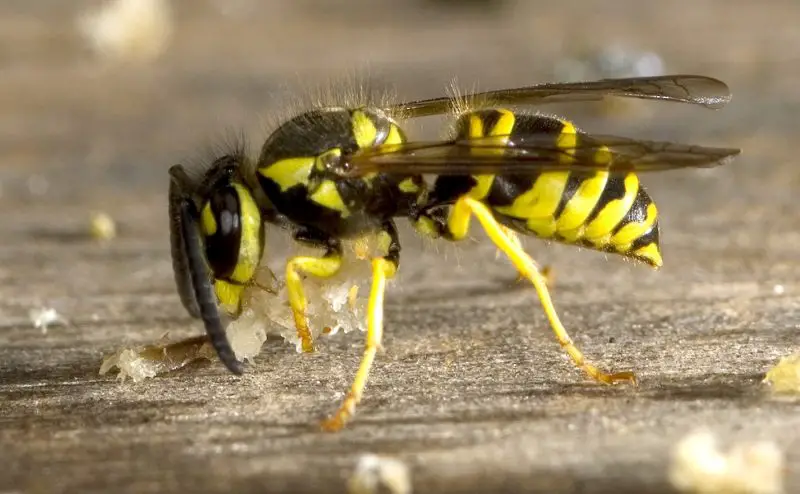
Yellowjackets are among the most aggressive stinging insects in Washington. These wasps are easily recognized by their black and bright yellow striped bodies and compact, shiny appearance. Adults typically range from 0.4 to 0.6 inches long, with strong mandibles used for chewing and defense.
They build nests in the ground, wall voids, or tree cavities, often near human activity. Because of their attraction to food and sweet drinks, they become a nuisance at picnics and outdoor events. Yellowjackets are active from late spring through early fall, peaking in late summer.
Their sting delivers venom that causes intense pain, swelling, and itching. Multiple stings can trigger severe allergic reactions or even anaphylaxis in sensitive individuals. Unlike honeybees, Yellowjackets can sting repeatedly, making them particularly dangerous when provoked.
In Washington, they thrive across both urban and rural areas, especially around garbage bins, parks, and campsites. Nests should be removed only by professionals, as disturbing them can provoke an aggressive swarm response.
Bald-faced Hornet (Dolichovespula maculata)
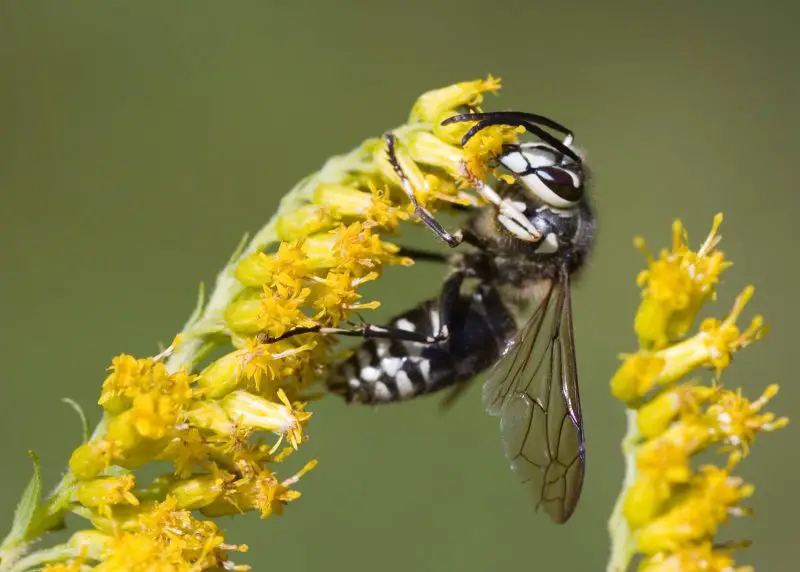
The Bald-faced Hornet, despite its name, is actually a large species of yellowjacket. It has a striking black body with white markings on the face and tip of the abdomen. Adults range from 0.5 to 0.75 inches long and are often seen hovering protectively around their large paper nests.
These hornets construct football-shaped nests made of chewed wood pulp, typically hanging high in trees, bushes, or on building eaves. They are social insects, living in colonies of several hundred workers during the summer months.
Bald-faced Hornets are highly defensive of their nests and will sting multiple times if threatened. Their sting injects venom that causes burning pain and swelling. Though not lethal, allergic individuals should seek medical attention after a sting. They also spray venom into the eyes of predators as a defense mechanism.
In Washington, these hornets are widespread, particularly in forested and suburban areas. While they are beneficial for controlling flies and caterpillars, their aggressive behavior near human dwellings makes them a potential danger during the nesting season.
European Hornet (Vespa crabro)
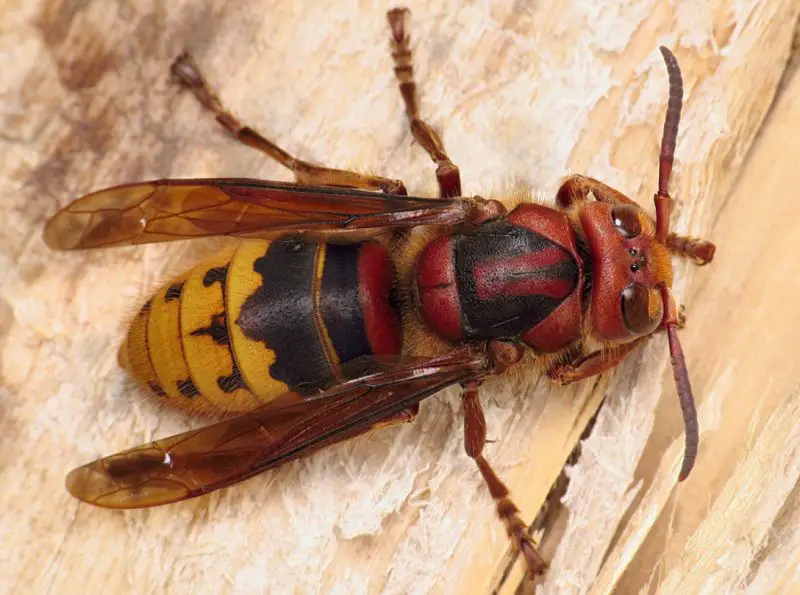
The European Hornet is the largest true hornet in Washington, growing up to 1.5 inches long. It has a reddish-brown head, yellow abdominal stripes, and semi-transparent orange wings. Despite its size and loud flight, it is less aggressive than other wasps unless its nest is disturbed.
European Hornets build their nests inside hollow trees, attics, or wall voids. The nests are made of grayish papery material and house hundreds of hornets during summer. These insects are most active at night and are attracted to lights, sometimes entering homes accidentally.
Their sting is painful and can cause swelling or allergic reactions. The venom contains compounds that damage tissue and trigger histamine responses. Though single stings are rarely dangerous, multiple stings can be harmful, especially to those allergic to wasp venom.
In Washington, European Hornets are less common than native wasps but are occasionally found in wooded and suburban areas. They play a role in controlling other insects but should be avoided, especially around their nests, due to their powerful sting and territorial nature.
Paper Wasp (Polistes spp.)
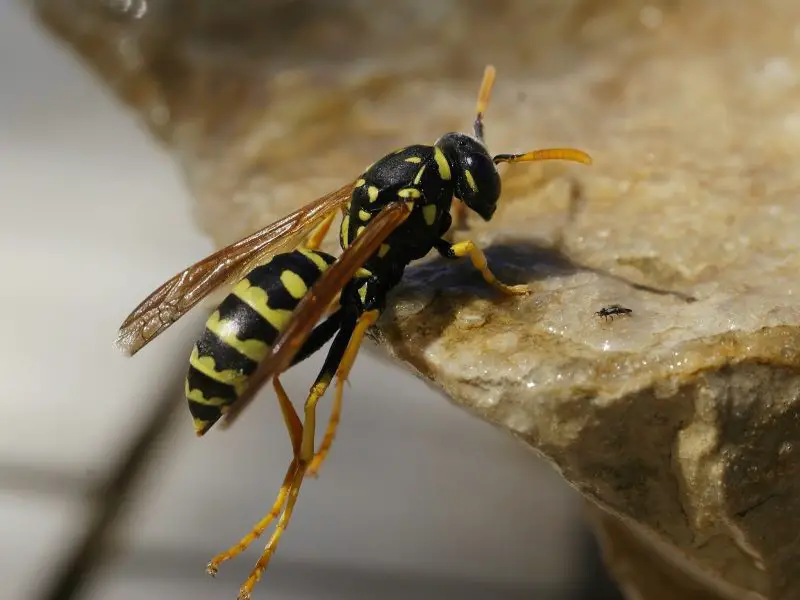
Paper Wasps are slender, long-legged insects that measure between 0.5 and 1 inch long. They have narrow waists, brown or black bodies with yellow or reddish markings, and a graceful flight pattern. Unlike hornets, their nests are open and consist of exposed hexagonal cells suspended from a single stalk.
They typically build nests under roof eaves, deck railings, or porch ceilings, favoring sheltered outdoor spots near human structures. Colonies are smaller, usually containing fewer than 100 individuals, and remain active during the warmer months of the year.
Paper Wasps are generally non-aggressive but will sting if their nest is approached. Their venom causes sharp pain and swelling but is not as potent as that of Yellowjackets or hornets. Still, allergic reactions can occur and require prompt treatment.
Across Washington, Paper Wasps are common in gardens and residential areas. They are beneficial pollinators and natural predators of caterpillars, but their nests near homes should be treated with caution to prevent accidental stings.
Tick (Ixodes pacificus – Western Black-legged Tick)
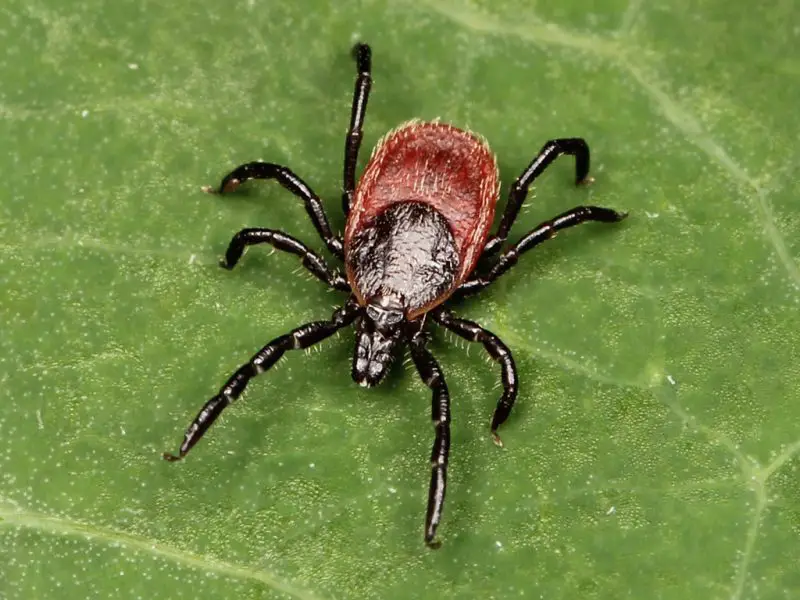
The Western Black-legged Tick is one of the most concerning biting pests in Washington due to its role in transmitting Lyme disease. Adult ticks measure about 3 millimeters before feeding and can expand to nearly 10 millimeters once engorged with blood. They have reddish-brown bodies and dark legs, making them relatively easy to identify under close inspection.
These ticks are commonly found in wooded areas, grassy trails, and along animal paths. They attach themselves to deer, dogs, and humans passing by. Active from early spring to late fall, they wait on tall grass or shrubs and latch onto hosts through direct contact.
Their bite is usually painless, allowing them to remain attached for several days unnoticed. The main danger lies in disease transmission — ticks can spread Lyme disease and other bacterial infections if not removed quickly. It’s crucial to check for ticks after outdoor activities in rural or forested areas.
In Washington, they are most common on the western side of the Cascade Range, including forested parts of Puget Sound. Preventive measures such as wearing long clothing, using repellents, and doing body checks after hikes can significantly reduce the risk of bites.
Mosquito (Culex spp. and Aedes spp.)
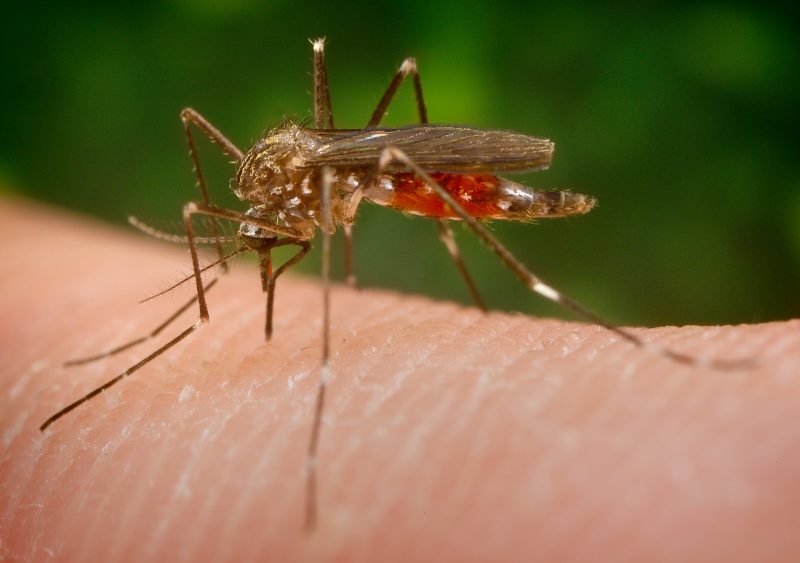
Mosquitoes are among the most widespread and dangerous insects in Washington, not because of their bite itself, but due to the diseases they can transmit. Adult mosquitoes are small, typically 0.1 to 0.4 inches long, with slender bodies, long legs, and a piercing proboscis used to suck blood.
They thrive in standing water such as ponds, ditches, and even small containers like flower pots and birdbaths. Female mosquitoes need blood to develop their eggs and are most active during dusk and dawn. Males, in contrast, feed only on nectar.
While most bites only cause itching and swelling, mosquitoes can spread West Nile virus in Washington, particularly in warmer regions during summer. Their bites may also trigger allergic reactions in sensitive individuals. Using insect repellent and eliminating stagnant water are the best ways to prevent infestations.
In Washington, mosquitoes are common across both eastern and western regions, especially in lowland wetlands and residential areas near lakes. Local mosquito control programs monitor populations to reduce the risk of disease transmission.
Kissing Bug (Triatoma spp.)
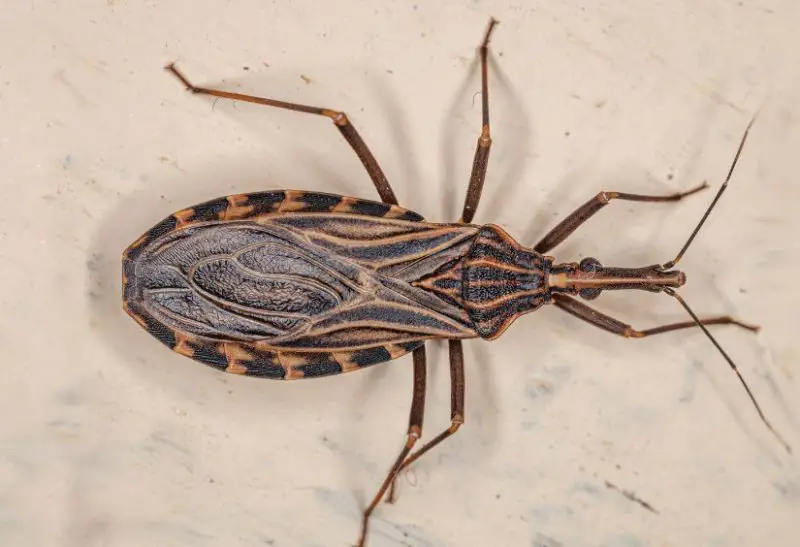
The Kissing Bug, also known as the Assassin Bug or Conenose Bug, is a blood-feeding insect that can transmit Chagas disease. Adult bugs measure around 1 inch long and have a distinctive dark brown or black body with orange or red stripes along the edge of their abdomen. Their long, pointed mouthparts are designed for piercing skin and feeding on blood.
These insects usually live in cracks of walls, under porches, or in animal nests. They are nocturnal and tend to bite humans on the face or lips while people are asleep, earning them the nickname “kissing bug.” Although Chagas disease transmission is rare in Washington, their bites can still cause irritation and allergic swelling.
The bite itself is often painless, but some individuals experience intense itching, redness, or allergic reactions. Secondary infections can occur from scratching the bite site. While most Kissing Bugs in Washington are not carriers of disease, they are still considered pests and should be avoided.
In Washington, sightings are uncommon but possible in warmer eastern regions or near rural structures. Homeowners are encouraged to seal cracks and use bed nets if living in rural or wooded areas where these insects may appear.
Brown Recluse Spider (Loxosceles reclusa)
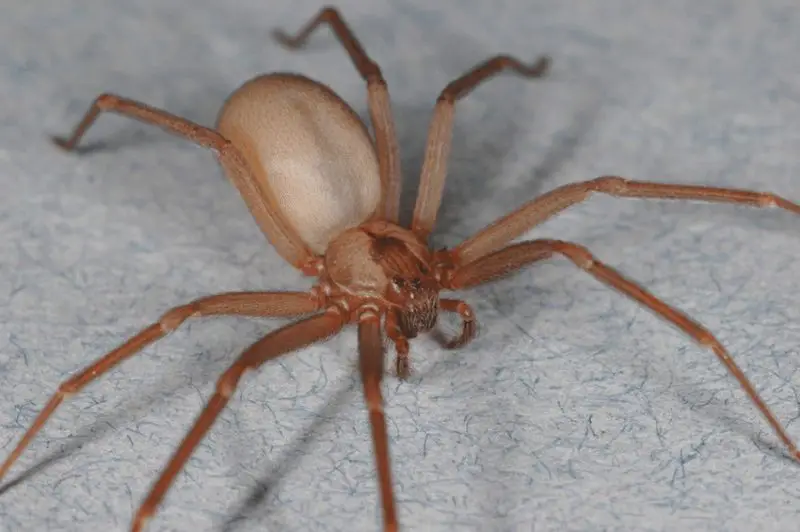
The Brown Recluse Spider is one of the most venomous spiders in North America, but it is extremely rare in Washington. Adults are about 0.5 inches long with long, thin legs and a violin-shaped mark on the back of their cephalothorax. Their coloration ranges from light tan to dark brown.
They prefer dry, dark, and undisturbed places such as attics, closets, or behind furniture. True infestations in Washington are rare, though isolated cases have been reported. Because of their shy nature, Brown Recluses typically bite only when pressed against the skin.
Their venom contains necrotic toxins that destroy skin tissue, leading to painful ulcers that may take weeks to heal. Though not usually fatal, bites can cause severe reactions and require medical attention. People often mistake other brown spiders for this species, so professional identification is essential.
In Washington, Brown Recluse sightings are often misidentifications, but caution is still advised when handling stored boxes, wood, or clothing. Regular cleaning and sealing cracks can prevent potential encounters.
Hobo Spider (Eratigena agrestis)
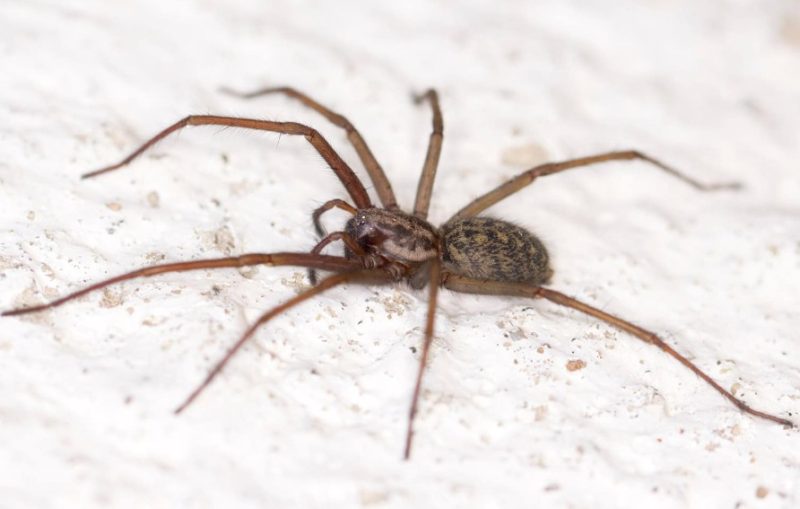
The Hobo Spider is one of the more common venomous spiders in Washington, especially east of the Cascade Mountains. Adults measure about 0.5 to 0.7 inches long, with brown bodies and a herringbone pattern on the abdomen. They lack the glossy black appearance of widow spiders and have longer, faster-moving legs.
Hobo Spiders build funnel-shaped webs close to the ground, often under rocks, logs, basements, or window wells. They are active hunters and will sometimes wander indoors during late summer and fall when seeking mates or warmth.
Their bites can cause redness, swelling, and mild pain. Earlier studies linked Hobo Spider bites to necrotic wounds, but recent research suggests their venom is less dangerous than once thought. Still, medical evaluation is recommended if a bite causes severe symptoms.
In Washington, Hobo Spiders are widespread, particularly in the Spokane area and other eastern regions. Keeping homes sealed and reducing clutter can minimize encounters with these fast-moving, ground-dwelling spiders.
Assassin Bug (Reduviidae family)
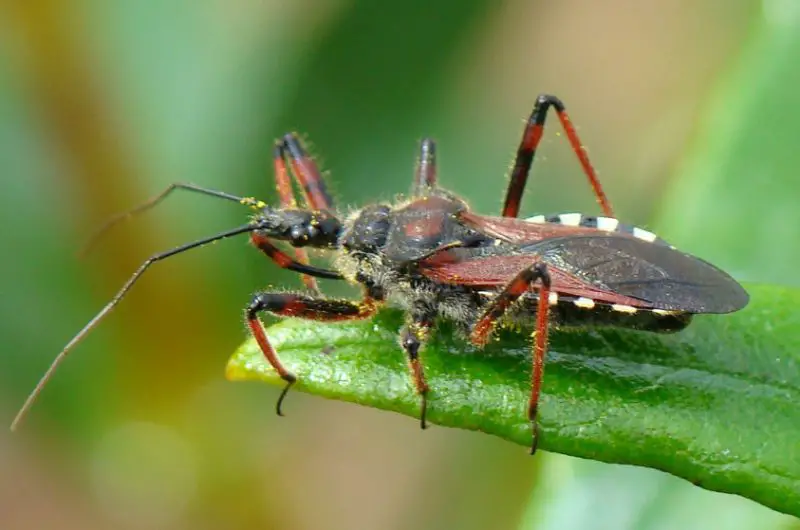
The Assassin Bug is a predatory insect known for its elongated body, curved proboscis, and quick strike. Adults typically range from 0.5 to 1 inch long and display colors from brown to black, sometimes with red or orange markings. Their narrow heads and strong front legs make them efficient hunters of other insects.
They can be found in forests, gardens, and grasslands across Washington, often hiding in leaf litter or on vegetation where prey is abundant. Assassin Bugs feed on other insects by piercing them with their sharp beak and injecting digestive enzymes that liquefy the insides.
While beneficial for pest control, Assassin Bugs can bite humans if handled or threatened. Their bite is extremely painful and can cause swelling, burning, and numbness that lasts for several hours. Fortunately, most species in Washington are not dangerous beyond local pain.
In Washington, these bugs are common in both urban gardens and wild areas, especially during summer. Though they play an important role in maintaining ecological balance, people should avoid direct contact due to their defensive and painful bite.
Giant Water Bug (Belostomatidae family)
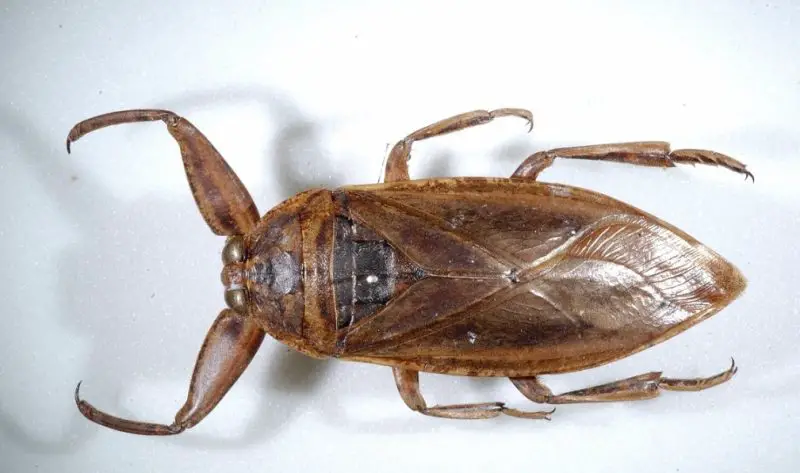
The Giant Water Bug is one of Washington’s largest aquatic insects, reaching lengths up to 2.5 inches. It has a flat, oval body, large front pincers, and a breathing tube extending from the abdomen. Its brownish color helps it blend with pond and lake bottoms.
These insects live in still or slow-moving freshwater environments such as ponds, lakes, and marshes. They are ambush predators that feed on fish, tadpoles, and other aquatic creatures by injecting digestive saliva through their strong forelegs.
Although not venomous, their bite is intensely painful and has earned them the nickname “toe-biters.” They can also deliver defensive bites if accidentally stepped on or picked up. Despite their intimidating nature, they pose little long-term danger to humans.
In Washington, Giant Water Bugs are frequently seen near wetlands, especially in eastern regions. At night, adults are attracted to lights and may occasionally be found on porches or near streetlamps. Caution is advised when swimming or handling aquatic vegetation.
Blister Beetle (Meloidae family)
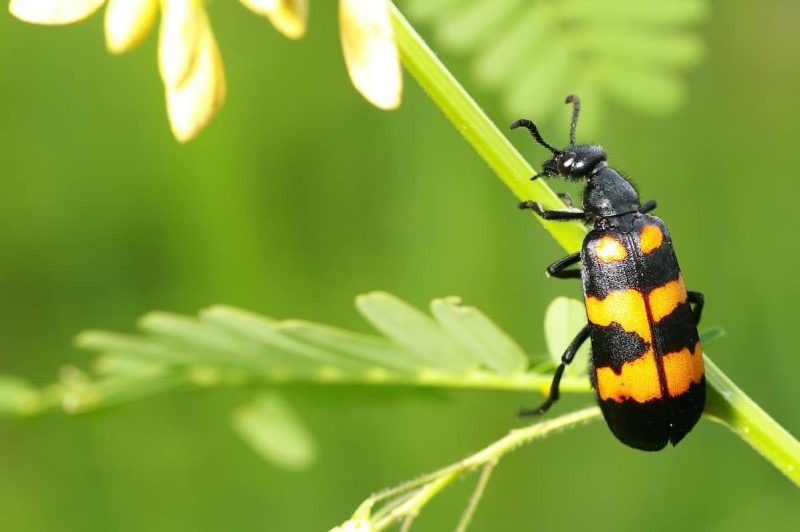
Blister Beetles are elongated insects with soft bodies and long necks, typically measuring between 0.3 and 1 inch in length. Their colors range from dull gray and brown to vibrant metallic hues like blue or green. These beetles secrete a toxic chemical called cantharidin, responsible for their painful reputation.
They are often seen feeding on flowers, crops, and foliage during the summer months. When threatened, they release cantharidin from their joints — a compound that can cause severe skin blisters upon contact. Livestock can also be poisoned if they consume contaminated hay containing crushed beetles.
Blister Beetle exposure leads to irritation, redness, and blistering of the skin. Ingestion of cantharidin is dangerous and can cause internal damage. It’s important to handle them carefully or avoid touching them entirely.
In Washington, Blister Beetles are found across agricultural areas, gardens, and open fields. They are most active in dry, sunny regions during midsummer. While fascinating, their toxic defense mechanism makes them a hazard to both humans and animals.
Fire Ant (Solenopsis invicta)
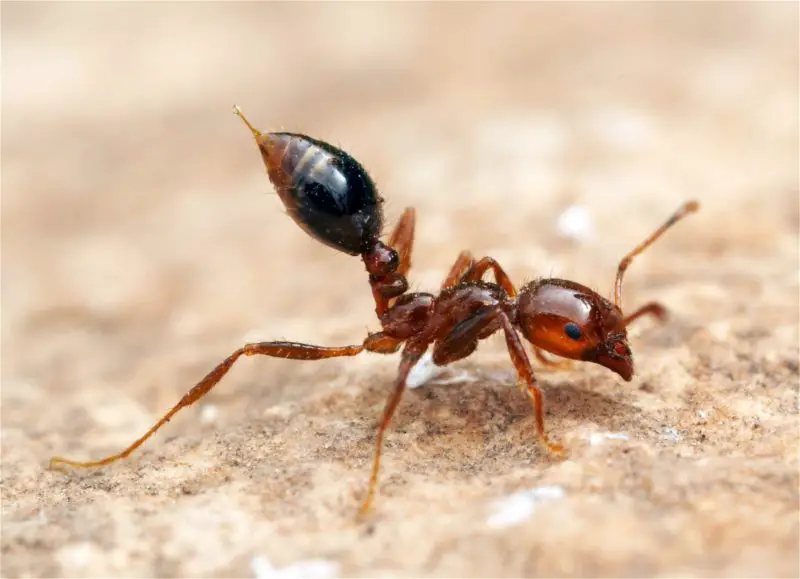
Fire Ants are small, reddish-brown insects about 0.1 to 0.25 inches long, notorious for their painful stings and aggressive behavior. They live in colonies that can contain hundreds of thousands of ants, building dome-shaped mounds in open soil or lawns.
Though native to South America, they have been detected in some parts of southern Washington, often transported through soil or nursery products. Fire Ants swarm rapidly when their mound is disturbed, biting and stinging multiple times.
Their sting injects venom containing alkaloids that cause a burning sensation, followed by itchy pustules. In sensitive individuals, stings may trigger allergic or anaphylactic reactions requiring immediate treatment. Fire Ants also attack small animals and can damage crops or electrical equipment.
In Washington, Fire Ant sightings remain localized and under active monitoring. Residents in infested areas should report mounds to local pest control authorities and avoid disturbing nests, as even minor agitation can lead to mass attacks.
Harvester Ant (Pogonomyrmex spp.)
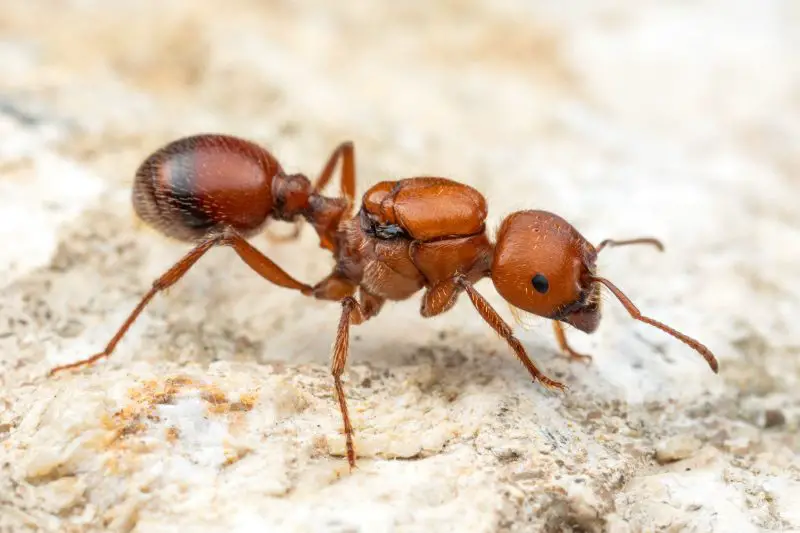
Harvester Ants are large, reddish-brown ants measuring up to 0.5 inches long. They are easily recognized by their big heads, strong jaws, and habit of clearing vegetation around their nests, leaving visible circular bare patches on the ground.
These ants collect seeds and plant material, which they store in underground chambers as food. Their colonies are typically found in open, dry environments such as grasslands or desert-like areas in eastern Washington. They are less common in wetter western regions.
Harvester Ants are highly defensive of their nests and can deliver painful stings that cause burning and swelling. Their venom is potent for their size, and multiple stings may cause allergic reactions in some individuals. They also bite simultaneously with stinging, which increases discomfort.
In Washington, Harvester Ant populations are small but present in arid regions east of the Cascades. While they play an important role in seed dispersal, it’s best to keep a safe distance from their nests to avoid their powerful stings.
Carpenter Bee (Xylocopa spp.)
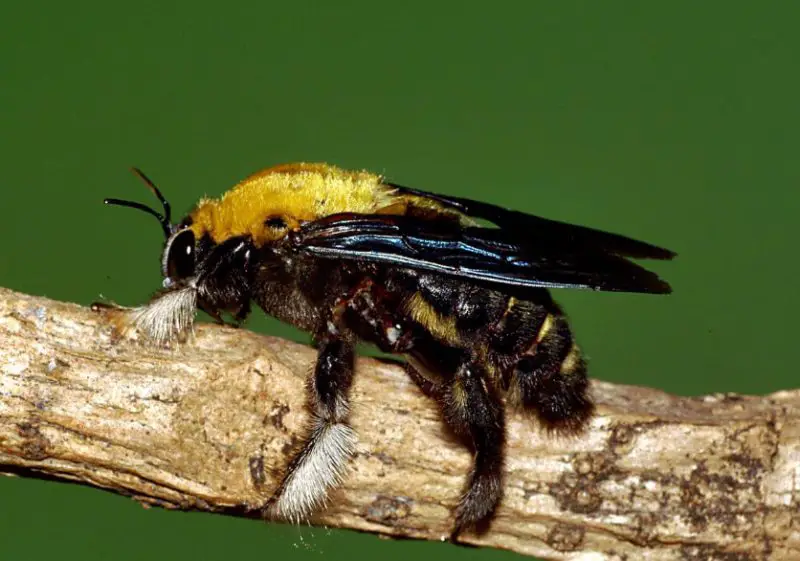
Carpenter Bees are large, robust insects that resemble bumblebees but can be identified by their shiny, hairless black abdomens. Adults typically measure between 0.7 and 1 inch long and have strong mandibles used for boring into wood. Males often hover near nests to guard them, while females focus on nesting and foraging.
These bees bore perfectly round holes into untreated or weathered wood to build nesting tunnels. They are commonly found in decks, fences, eaves, and wooden structures throughout Washington, especially in suburban and rural areas. Despite their reputation for damaging wood, they rarely cause serious structural harm unless colonies persist for years.
Carpenter Bees are generally not aggressive. Only females can sting, and they do so only when directly threatened. Their sting is painful but less toxic than that of wasps or hornets. Males cannot sting but may buzz close to people, which can be intimidating.
In Washington, they are active in late spring and summer. While considered mild pests due to their wood-boring habits, Carpenter Bees play a beneficial role in pollination and should be managed carefully rather than exterminated outright.
Velvet Ant (“Cow Killer,” Dasymutilla occidentalis)
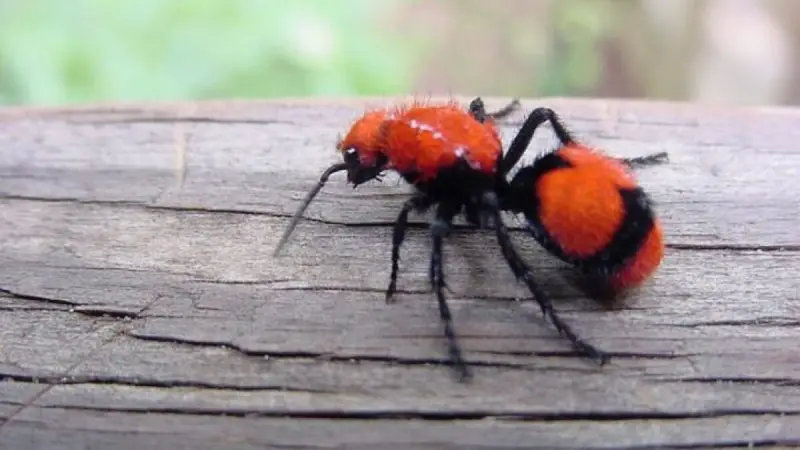
The Velvet Ant, despite its name, is actually a type of wasp. Females are wingless, covered in bright red or orange fuzzy hairs, and measure about 0.6 to 1 inch long. Their vivid coloration serves as a warning to predators of their potent sting. Males, which have wings, are less frequently seen.
These wasps inhabit dry, sandy areas and are often found wandering on the ground in open fields or meadows. Females invade the nests of ground-nesting bees and wasps to lay their eggs, which later feed on the host larvae.
Velvet Ants are solitary and not aggressive but will sting if handled or trapped. Their sting is considered one of the most painful of all insects in North America, earning them the nickname “cow killer.” Although the sting causes intense pain, it is not lethal to humans.
In Washington, sightings are rare but possible in arid regions and sandy soils east of the Cascade Mountains. They play an important role in controlling other insect populations, but their sting makes them one of the state’s most formidable bugs.
Giant Hornet (Vespa mandarinia, Asian Giant Hornet)
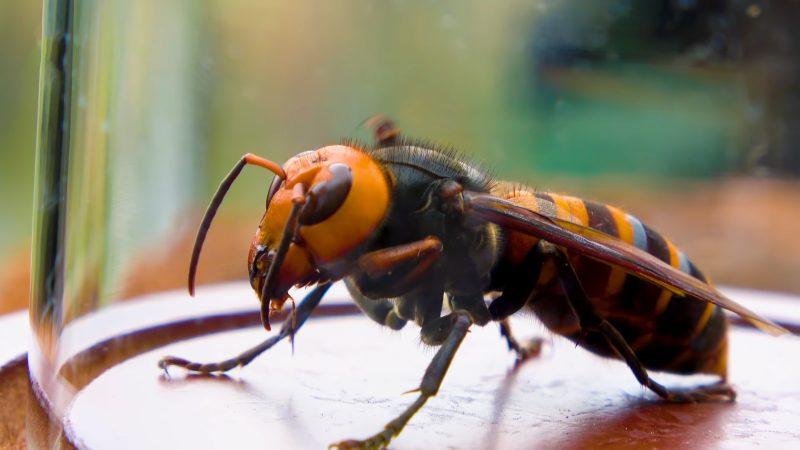
The Asian Giant Hornet, sometimes called the “murder hornet,” is the world’s largest hornet, with queens reaching up to 2 inches long and workers around 1.5 inches. It has an orange head, dark brown thorax, and broad yellow-and-black striped abdomen, making it easy to recognize.
This hornet was first detected in Washington in 2019, particularly in Whatcom County near the Canadian border. It nests in underground burrows or rotted tree roots and preys on honeybees, wasps, and other large insects. Its presence raised concerns due to potential impacts on local ecosystems and agriculture.
The sting of a Giant Hornet is extremely painful and delivers a large dose of venom capable of causing tissue damage and severe allergic reactions. Multiple stings can be dangerous, especially to those allergic to wasp venom. Their aggressive defense of nests makes them a significant hazard if disturbed.
Washington State Department of Agriculture has worked to track and eradicate populations to prevent establishment. As of now, sightings remain rare, but residents are advised to report any potential hornets to local authorities immediately.
Deer Fly (Chrysops spp.)
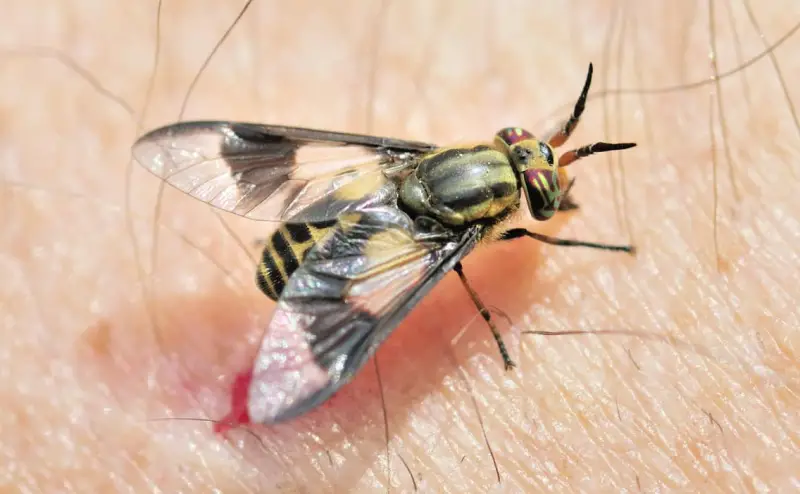
Deer Flies are medium-sized biting flies, typically 0.25 to 0.4 inches long, with patterned wings and brightly colored green or gold eyes. They are strong fliers and are often mistaken for horse flies due to their similar behavior and painful bites.
These flies breed near wetlands, marshes, and forests where moisture supports their larvae. Females feed on the blood of mammals, including humans, while males feed on nectar. Deer Flies are most active on warm, sunny days, particularly during summer months in Washington.
Their bite causes sharp, immediate pain followed by swelling and itching. Though they can transmit diseases like tularemia in some regions, such cases are extremely rare in Washington. The primary concern is their painful bite and nuisance factor during outdoor activities.
In Washington, Deer Flies are common near rivers, lakes, and wooded trails. Wearing light-colored clothing and using insect repellent can help reduce bites when spending time outdoors in infested areas.
Horse Fly (Tabanus spp.)
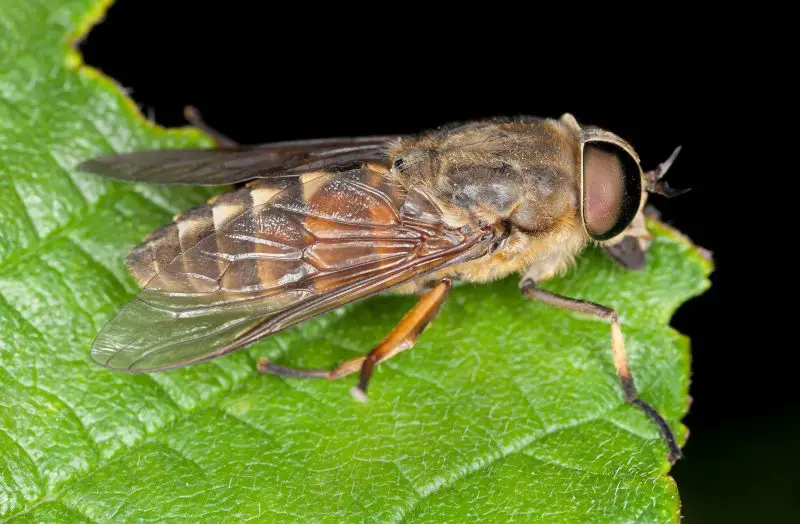
Horse Flies are large, powerful insects ranging from 0.5 to over 1 inch long. They have wide heads with iridescent green or purple eyes and stout, grayish-brown bodies. Females are equipped with sharp mouthparts that slice the skin to feed on blood, while males consume nectar and pollen.
They thrive near bodies of water, wetlands, and pastures where livestock and wildlife are abundant. Their larvae develop in muddy or aquatic environments and feed on organic matter or small invertebrates. Horse Flies are most active during warm summer months and can be persistent biters.
Their bites are extremely painful and can cause significant swelling, redness, and irritation. Unlike mosquitoes, they cut the skin rather than pierce it, which makes the wound bleed more. They are not known to transmit diseases in Washington but can cause secondary infections from scratching.
In Washington, Horse Flies are widespread, especially in rural and coastal areas. They can be found buzzing around lakes, horses, and cattle fields, posing a nuisance to both animals and people during outdoor activities.
Bed Bug (Cimex lectularius)
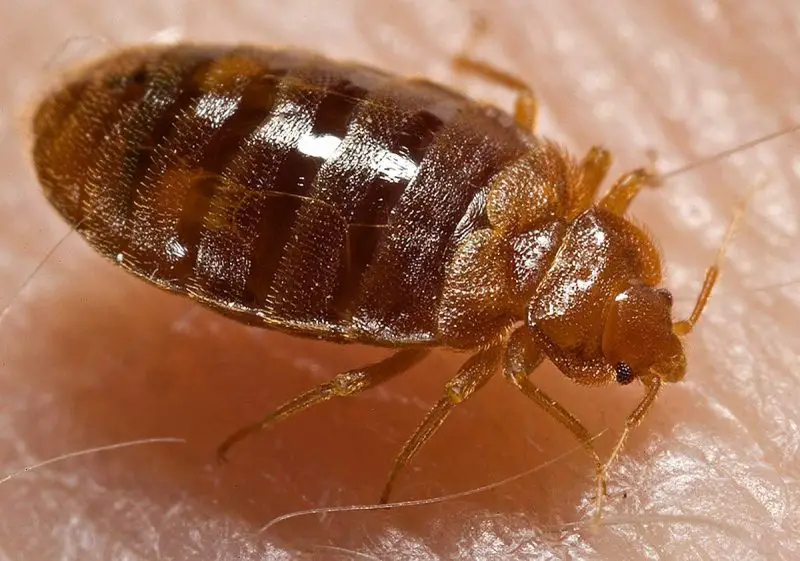
Bed Bugs are small, oval, reddish-brown insects measuring about 0.2 inches long. They are wingless and feed exclusively on blood, hiding in cracks, mattress seams, and furniture during the day. At night, they emerge to bite sleeping humans, leaving itchy red welts.
Infestations usually begin when bed bugs hitchhike on luggage, clothing, or used furniture. They are not known to transmit diseases, but their bites can cause allergic reactions, anxiety, and sleep loss. They reproduce rapidly, making infestations difficult to control without professional treatment.
Their bites often appear in clusters or lines on exposed skin areas such as arms, neck, or back. While not dangerous, repeated bites can lead to significant discomfort and secondary skin infections from scratching.
In Washington, Bed Bugs are common in hotels, apartments, and dormitories across both urban and suburban areas. Regular inspection and careful management of bedding and furniture are key to prevention and early detection.
Flea (Ctenocephalides felis – Cat Flea and Pulex irritans – Human Flea)
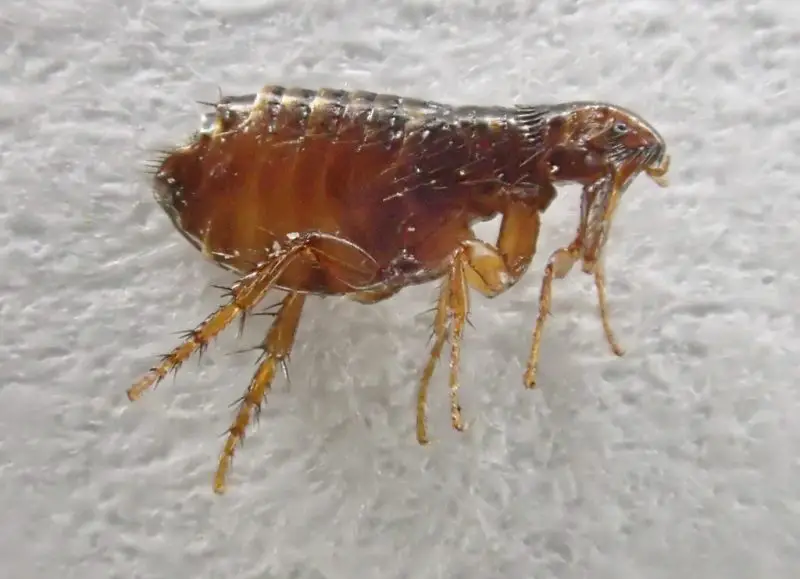
Fleas are tiny, wingless parasites measuring about 1/8 inch long, with flattened bodies adapted for moving through hair or fur. They are reddish-brown and capable of jumping great distances relative to their size. Cat Fleas are the most common species affecting pets and humans in Washington.
These pests feed on the blood of mammals and birds, causing itching, irritation, and sometimes allergic dermatitis. Heavy infestations can lead to anemia in small animals. Fleas can also transmit tapeworms and bacterial diseases such as murine typhus and plague.
Flea bites usually appear as small red bumps surrounded by a halo, often concentrated around the ankles or lower legs. They are not life-threatening but can become infected if scratched excessively.
In Washington, fleas are widespread in homes with pets and wildlife presence. Regular pet grooming, vacuuming, and flea treatments are essential to prevent infestations. Controlling fleas requires addressing both the animal and its environment simultaneously.
Tips for Avoiding Dangerous Bugs in Washington
Washington is home to an incredible variety of insects and spiders, many of which are completely harmless and even beneficial to the environment. However, some species—such as wasps, hornets, ticks, and spiders—can pose real risks through venomous bites, allergic reactions, or disease transmission. Understanding how to identify these bugs and knowing where they are commonly found can make all the difference in staying safe outdoors.
Most dangerous bugs in Washington are not naturally aggressive. They bite or sting only when threatened or disturbed. Simple awareness and respect for their habitats can prevent most encounters. Whether you’re hiking in the Cascades or gardening at home, paying attention to your surroundings is the best protection.
To minimize risk, wear long sleeves, pants, and closed shoes when in wooded or grassy areas. Use insect repellents containing DEET or picaridin, and check for ticks after spending time outdoors. At home, reduce pest risks by sealing cracks, cleaning up food waste, and keeping firewood or debris away from walls and decks.
If you are bitten or stung, stay calm. Clean the wound with soap and water, apply ice to reduce swelling, and watch for signs of allergic reactions such as dizziness or shortness of breath. Seek immediate medical attention if symptoms worsen. With proper caution, you can appreciate Washington’s rich biodiversity while staying safe from its more dangerous residents.
FAQs about Dangerous Bugs in Washington
What is the most dangerous bug in Washington?
The Western Black Widow Spider (Latrodectus hesperus) is considered the most dangerous bug in Washington due to its neurotoxic venom. While bites are rare, they can cause severe muscle pain, cramps, and nausea. Medical attention is recommended for any confirmed bite.
Are there venomous spiders in Washington?
Yes, Washington is home to venomous spiders like the Western Black Widow and the Hobo Spider. The Black Widow’s venom is more potent, while the Hobo Spider’s bite can cause localized irritation. Fortunately, both are shy and rarely bite unless provoked.
Do mosquitoes in Washington carry diseases?
Some mosquitoes in Washington can transmit West Nile virus, though cases remain uncommon. Using insect repellent, wearing long clothing, and eliminating standing water around homes are effective prevention methods.
Are ticks in Washington dangerous?
Ticks—especially the Western Black-legged Tick (Ixodes pacificus)—can carry Lyme disease. They are mainly found in forests and grassy areas west of the Cascades. After outdoor activities, always check your body, clothes, and pets for ticks.
What should I do if I find a nest of wasps or hornets?
Avoid disturbing the nest and keep a safe distance. Contact a licensed pest control professional to remove it safely. Yellowjackets, hornets, and wasps can attack in swarms if threatened, and their stings are painful and potentially dangerous for allergic individuals.
Are there “murder hornets” in Washington?
The Asian Giant Hornet (Vespa mandarinia) was detected in northern Washington in 2019, but control efforts have prevented widespread establishment. Occasional sightings are still monitored by state agencies. Residents are encouraged to report any large hornet sightings.
How can I prevent bug infestations at home?
Keep food sealed, repair window screens, seal wall cracks, and remove standing water. Regular cleaning, pet flea control, and checking for bed bugs after travel can significantly reduce infestation risks.
What should I do if I’m bitten or stung by a bug?
Clean the area with soap and water, apply a cold compress, and use antihistamines or hydrocortisone cream for itching or swelling. Seek medical help immediately if you experience symptoms such as difficulty breathing, dizziness, or swelling around the face or throat.
Are any of these bugs beneficial to the environment?
Yes. Many of Washington’s so-called “dangerous” bugs—like Carpenter Bees, Assassin Bugs, and even Hornets—help control pest populations or pollinate plants. It’s important to recognize their ecological value while managing risks responsibly.

